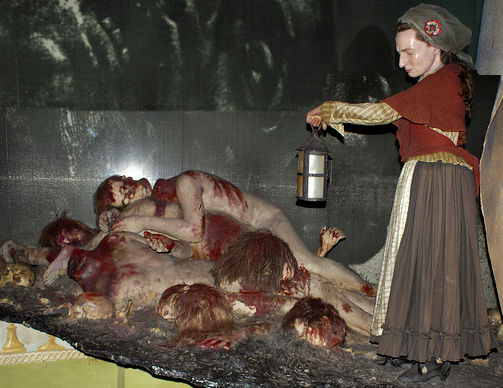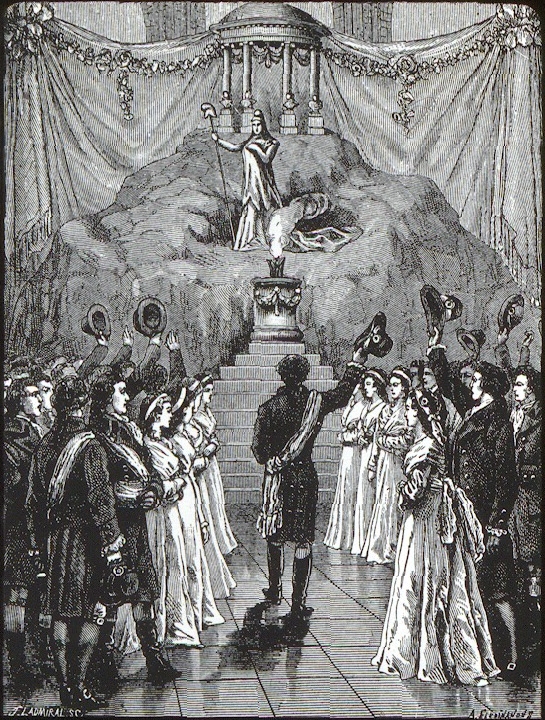By Gustave Lenotre*
“The scaffold had become a part of the people’s life, and a certain number of Parisians, were extremely entertained by the new plaything. Someone conceived the idea of beheading, in the porches of the old basilica of Notre-Dame, all the stone Saints that adorned the church-fronts. The whiteness of the broken stone contrasted strikingly with the bodies of the statues, blackened by time, and gave an impression of freshly-cut flesh, which was regarded as delightfully funny.”
No doubt you will think that ghoulish humor could not be carried farther: nevertheless there were even more horrible things than these. The wave of madness that spread over France had turned the nation’s head to such a degree that the guillotine had its lovers and its worshipers. There was a religion of the scaffold. Executioners volunteered, for love of the work, to purge the soil of the Republic from the royalists who defiled it. The Revolution had done their best to raise the scaffold to the dignity of an honored institution.
Gateau, Controller of Army Stores, wrote: “Saint Guillotine¹ is in a state of the most brilliant activity, and the beneficent Terror is producing here, in a miraculous way, a condition of affairs that there could be no hope of achieving by means of reason and philosophy in less than a century. The time has come for the justice that inspires fear, and every guilty head ought to pass under the national leveler. The aristocrats must be shown, by songs and dances, that their death is the people’s only happiness.” Gateau had a wax seal engraved with a guillotine. These men made blood their god.
The dead were devoid of clothing, the executioners sold it until the Revolution made it that the government acquired the money; anything left was given to the poor.

Marie Grosholtz (Madame Tussaud) 1761-1850. A scene from the Chamber of Horrors in London of Madame Tussaud searching for the guillotined head of Marie Antoinette at Madeleine Cemetery, October 16, 1795. In Paris of 1770, Madame Tussaud learned to model wax likenesses under the tutelage of her mentor, Dr. Philippe Curtius. At the age of 17, she became an art tutor to King Louis XVI’s sister at the Palace Of Versailles. During the French Revolution, Marie was commanded to visit the mass graves to collect the severed heads of notable Royalist and Revolutionary victims of the guillotine so as to make new death masks. She even did Robespierre own death mask after he was a victim of the guillotine. The rebels used their death masks as trophies and paraded them through the city. She survived the Revolution and brought her exhibition to England in 1802. Photo by mariosp & bruciestokes.
¹The words Sainte Guillotine, were in common use.
*A short excerpt from his book by the same title.
The Guillotine and Its Servants By Gustave Lenotre. Pg. 199: Ch. VIII, The Scaffold in Song; Pgs. 203-208: Ch. IX, Worship of the Guillotine
Short Stories on Honor, Chivalry, and the World of Nobility—no. 587












